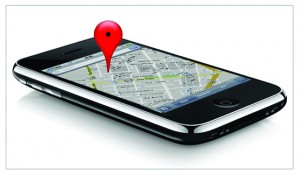Location Data Tells More About Consumers Than Their Whereabouts


Improving the accuracy of location data not only provides for better campaigns, it can also offer richer insights into buyer intent based on the places consumers visit.
Most location-based marketing initiatives target consumers in real-time based on where they are during the duration of the campaigns. The real potential of location technology, however, is the insights that it can provide so marketers can gain better understanding of consumer behaviour, Regina Goh, BlisMedia's Asia managing director, said in an interview with ExchangeWire.
Goh acknowledged that the use of inaccurate location data had created a lot of conversations and bad taste in the industry. She attributed this to the use of basic tools that were incapable of providing higher precision, noting that 90% of location data was based only on lat/long coordinates and, therefore, largely inaccurate.
Most marketers also include location as part of a wider campaign, and do not have a specific focus or strategy in place on how the data can be mapped so that it makes sense and can be scaled, she said.

BlisMedia's Asia managing director Regina Goh
She added that BlisMedia does not process GPS data that is likely to be inaccurate, eliminating lat/long data that does not contain at least four decimal points, and uses a combination of IP addresses and lat/long data to establish a more precise reading. It assesses impressions that contain IP and maps the relationship with the GPS data, studying patterns to identify names of buildings and points of interests associated with the data.
If Hotel ABC, for instance, has lat/long of 1.1111 and several IP addresses around the vicinity are listed as 10.10.10, it would be logical to infer that 10.10.10 indicated someone was at Hotel ABC. So users who may not be associated with the 1.1111 lat/long data, but are connected to that IP address, are likely at the hotel.
This combination of IP addresses and lat/long data is especially useful in shopping malls or buildings where location data is generally low and has low scalability, Goh explained. BlisMedia carries out six verification steps to determine the accuracy of the user's location, ranging from filtering out bad IP and lat/long data, IP mapping, and ensuring that the IP does not appear out the range of its associated lat/long.
"Lat/long data has no meaning if we don't know what is the place or building associated with it," Goh said, adding that BlisMedia had mapped out more than 500,000 locations and points of interests in Asia based on accurate location data.
Its structured verification process ensures BlisMedia uses only accurate location data, which is vital in a market in which publishers often lack such standardised procedures and churn out data blocks are largely inaccurate, she said. The company can provide relevant location data up to 10 metres of the user's location.
"We're not inventing anything new. We're just doing a better job of connecting the technology, fixing the inefficiencies, and building the data that's bigger and better than other market players," she added.
Looking beyond location for customer insights
Goh noted that the industry currently taps location data mostly to run technical campaigns targeting people real-time and is failing to tap the potential of location technology to provide deeper insights into consumer behaviour.
For instance, if a consumer has visited a car dealership several times over the last three weeks, it is more likely this person is looking to purchase a new car, compared to someone who only has been browsing car websites at home. Car ads then can be pushed to the consumer's mobile at any time, instead of only when the user is at a specific location.
By using location data to identify where consumers have been, as well as their browsing habits, certain predictions can be inferred about an audience that are fairly accurate, Goh said, noting that awareness of this potential was still low.
"Usually we see advertisers targeting footfall for a specific event at a mall, but targeting people real-time is just one way to engage audience," she said. "We want to help them see the potential of location behaviour, which can drive brand messaging to targeted audience regardless of time and place."
"It allows us to be more effective in our marketing efforts, rather than trying to catch the consumers' attention only when they're at a mall. This also addresses the issue of scalability because the potential touch-points is so much bigger, allowing brands to target their audience when they're at work or home and only when they're at the mall."
Goh added that location data can be integrated into programmatic to beef up inventory yield, which is a key objective of publishers. It adds another layer to impressions generated from exchanges and enriches the data coming from publishers.
She noted, however, that while there was demand for location-based programmatic buying, most advertisers would shy away from the higher premium they would have to pay for such inventory.
BlisMedia links up to all SSP exchanges, including up to 60 SSPs. It currently has 10 staff in its Singapore site, which was established in late-2013, and is looking to open a new office in Southeast Asia. The company also is keen to set up local sites in Hong Kong and Dubai, according to Goh.
Its customers in Asia include HSBC and Standard Chartered Bank.
AdvertiserAgencyAnalyticsAPACDataExchangeMobileProgrammaticPublisherTargetingTradingTrading DeskViewability








Follow ExchangeWire